Herb Growing Guide
| Variety | Planting Depth | Indoor Date | Outdoor Date | Soil Temperature (℉) | Height (inches) | Spread (inches) | Days to Maturity | Soil | Light | Growth Type |
| Basil | 1/2 inch | Anytime | March-August | 70 | 12-24 | 12 | 70 | Rich and moist | Full | Annual |
| Catnip | 1/4 inch | Start 4-8 weeks before the last frost | April-June | 70 | 12-36 | 18 | 75 | Rich | Full | Perennial |
| Chives | 3/8 inch | Anytime | April-May | 65 | 12-18 | 18 | 80 | Rich and moist | Full | Perennial |
| Coriander | 3/8 inch | Start 2 weeks before the last frost | March-August | 60 | 12-36 | 4 | 65 | Light | Partial | Annual |
| Dill | 3/8 inch | Start October-April | March-August | 65 | 36-48 | 12 | 60 | Rich | Full | Annual |
| Lavender | 1/2 inch | Anytime | April-May or October | 70 | 18-36 | 24 | 2 years | Well drained | Full | Perennial |
| Lemongrass | 3/8 inch | Start February-March | March-August | 70 | 12-24 | 18 | 75 | Rich | Partial | Annual |
| Mint | 1/8 inch | Anytime | April-May | 70 | 12-24 | 18 | N/A | Rich and moist | Partial | Perennial |
| Oregano | 1/4 inch | Anytime | April-May | 70 | 12-24 | 18 | 85 | Poor | Full | Perennial |
| Parsley | 3/8 inch | Anytime | March-August | 70 | 18-24 | 6-8 | 80 | Rich | Partial | Biennial |
| Rosemary | 1/8 inch | Anytime | April-May | 70 | 48-72 | 48 | 85 | Less acidic | Full | Perennial |
| Sage | 1/8 inch | Anytime | April-May | 60 | 12-48 | 30 | 70 | Well drained | Full | Perennial |
| Stevia | 1/8 inch | Start February-March | April-May | 65 | 18-30 | 20 | 100 | Rich | Full | Perennial |
| Thyme | 1/4 inch | Anytime | April-May | 70 | 6-24 | 10 | 80 | Fertile | Partial | Perennial |
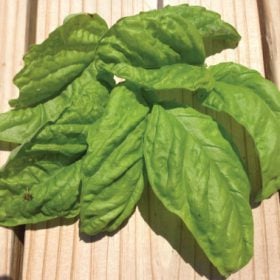 |
Basil TipsThere are many different kinds of basil to choose from for today’s gardeners. They range from cinnamon, lemon, to purple basil used mostly for decoration. Choose a variety right for you and your needs as basil is only an annual and will have to be replanted every year. Basil can be grown indoors with the right conditions but is most often started indoors and then transplanted outdoors. Start your basil seeds indoors 6-8 weeks before last frost for your location. Drop a few seeds into each cell to ensure germination. Cover the seeds with a slight soil cover and dampen soil with a light watering. To speed up germination cover with a plastic top and place in a sunny location. Water twice a day and remove plastic top when seedlings emerge. Once two sets of leaves emerge basil can be transplanted into the garden. Pinch o the top two sets of leaves once the basil plant reaches reasonable height. This gives you a much higher quality plant. Learn More: How to Grow Basil Suggest Varieties: |
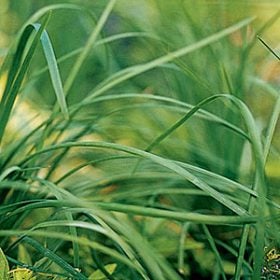 |
Chive TipsChives are by far the easiest herb to grow in the home garden. They can be easily started by seed indoors or outdoors. Plant chive seeds about 1/4” in wet soil. Chive seeds will germinate best indoors in a dark spot until they begin to sprout. Then move to a location where they get some sun. Chives do well in soil temperatures 60-70 degrees. When the chives reach 6” tall they are ready to be transplanted to the garden. Find a location that has strong sunlight and rich soil, but will survive and almost any area. If you decide to directly sow chive seeds into the garden be sure to wait till after the last frost. The seeds may be slow to germinate until the soil warms up. Harvesting chives is just as easy as growing them. Once they reach 1 foot tall they are ready to be used. Cut o as much as you need. It is safe to cut o as much as half of the chive without harming the plant. Theflowers the chives produce are edible as well and can be added to your salad or decoration of many meals. Learn More: How to Grow Chives Suggested Varieties: |
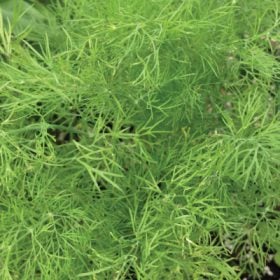 |
Dill TipsDill is a tall, hardy herb plant that will grow as an annual in most locations. Dill is grown for both its leaves and seeds which can be used in many ways. One of the easier herbs to grow inside and outdoors. Can easily be grown in a container garden. When grown outdoors it is important to take two things into consideration. It grows tall so be sure to plant in a location that will not block other plants from receiving an adequate amount of sun. Also since it grows tall it can be damaged by high winds so try to find a location that blocks the wind. Plant dill directly where it will stay as it germinates quickly. Find a location that has plenty of sun. Cover the seed with 1/4” of soil and water soil generously. For best results the soil needs to be cultivated deep in order for the dill roots to strengthen properly. Plant seeds in the spring after your last frost date. To ensure a long harvest try planting seeds every few weeks. Learn More: How to Grow Dill Suggested Varieties: |
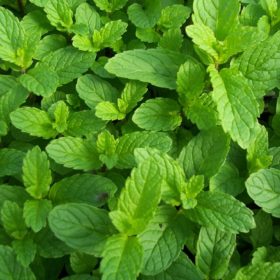 |
Mint TipsMint is another easy herb to grow and is perfect for the beginning gardener or anyone that loves mint. Mint grows very quickly and is a hardy perennial that can grow to over 3 feet in height. We suggest starting mint indoors with controlled conditions. Sow mint seeds 1/8” deep and cover with loose, moist soil. For best germination rates keep soil above 70 degrees. When the transplants are reasonable size and have been hardened o from the outside conditions bring them outside and plant anywhere from 12-24” apart depending on the variety requirements. Choose a location that has full to partial sun and mint will do well in almost any soil conditions. Mint leaves can be harvested at any times once that plant has established itself in your home garden. Try picking them in the morning hours when the oils tend to be strongest. Spread leaves out and dry in a cool, ventilated area. Learn More: How to Grow Mint Suggested Varieties: |
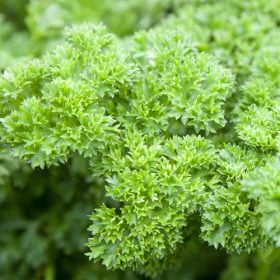 |
Parsley TipsParsley tends to grow best in the northern states of the country, but can be grown almost anywhere with the right care and location. Parsley can add beauty and taste to many meals. Parsley seeds are on the harder side to germinate when compared to most herb seeds. One of the best methods to increase germination is to soak your parsley seeds in warm water overnight. Be sure to change the water frequently, every 2 hours, as a growth inhibitor is released by the seeds! Sow the seeds in a seed starting medium and cover with 1/4” of soil. Keep the soil evenly moist and seeds will do best with a soil temperature of 70 degrees. Seed germination can take up to 14 days so be patient. Transplant seedlings when 6” in height and after your last frost date. Be sure to loosen soil deep into ground for health parsley plants. Depending on variety, but in general space plants 6-8” apart. Try protecting your parsley over the winter and it may reseed itself. Learn More: How to Grow Parsley Suggested Varieties: |
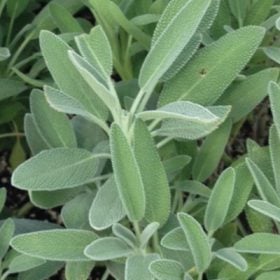 |
Sage TipsSage is a rewarding herb to grow as it can add some taste to any meal. Sage is an easy herb to grow from seed but can require some patience as sage seeds are slow germinators. Sage can be started indoors or outdoors but as always we recommend starting inside for better germination rates. Spread sage seeds over soil and cover with 1/8” of damp soil but not soaked. Not all seeds will germinate and the ones that do may take up to 6 weeks. Patience is key! When your Sage seeds have become seedlings and are ready to transplant into your home garden be sure to harden them o to the outside conditions. Sage plants prefer full sun and do best in well drained soils as they prefer to not have their roots remain wet. Allow for the soil to dry between waterings. Sage comes from hot, dry climates and will do best in southern states but can be grown throughout the states. Harvest biggest leaves first and pruning the top leaves early will entice a fuller, better producing Sage plant. Learn More: How to Grow Sage Suggested Varieties: |
